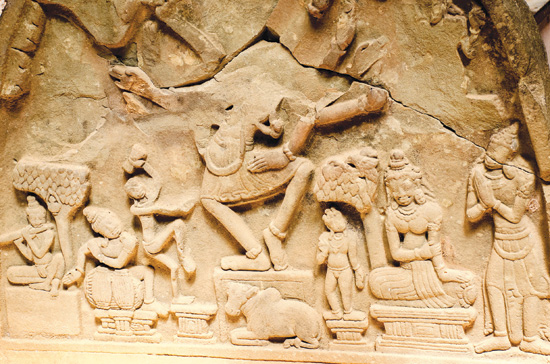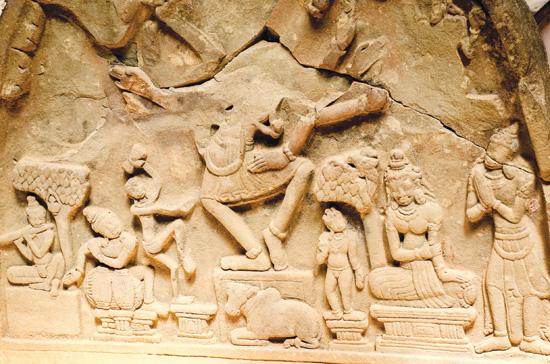
In 1885, while wiring telegram cables, some French troopsdiscovered a Champa temple complex under the cover of trees and vines in avalley 2 km in diameter. The valley is beside My Son village of Duy PhuCommune, Duy Xuyen district, 70 km to the South-West of Da Nang City.
In 1895, a French man named C. Paris had the area around thetemples cleared. In 1898-1899, French scholars L. Finot and L. De La Jonquièrediscovered 35 steles with inscriptions (1/5 of the total number of Champasteles found in the whole Middle of Vietnam.) In 1901, French archeologist andarchitect H. Parmentier came here to study the art of architecture. Their firstresearch papers, published in the journal of the École française d’Extrême-Orient,served as the basis for subsequent studies of Champa culture.

Experts say an early stele found at My Son recounts thataround the IV century, King Bhadravarman had a wooden temple built at the siteto worship God Shiva- Bhadravarman. It said, “Bhadravarman offers a land as aneternal tribute to the God, with Suhala mount to the East, Mahaparvata Mountainto the South and Kucaka mount to the West…together with the people living onit and all of its produce.”(1)
According to the description of the mountains in the stele,researchers conclude that My Son Valley, surrounded by high sacred mountains,was chosen to be the spiritual capital of the Champa Kingdom. This spiritualvalley was not far from the state’s center of power, Simhapura (Tra Kieu).Thisfact shows that since the IV century, the Champa Kingdom had adopted Hinduism,thus accepting the influences of Hindu civilization.
Some later steles say that the wooden temple was completelyburnt down by the end of the VI century. After that, by Royal order, a newtemple was built in place of the old one. Since then, every new Champa Kingcomes to the Holy Land of My Son to be inaugurated, make offerings and build anew shrine. And so, from the VII to XIII centuries, over 70 towers were built inMy Son valley.
Almost all the architectural structures at My Son arespiritual edifices to worship, make offerings, commemorate great conquests, andfor Champa Kings, to communicate with the Gods. This is also where the Kings’spirits rejoin the Hindu Gods, especially Shiva, worshipped by some sects asthe Supreme Being.

Almost all architectural styles of Champa art are foundhere, from the oldest ones to later ones such as Hoa Lai, Dong Duong, My Son,Po Nagaf and Binh Dinh. Not only temples and shrines, but also hundreds ofpriceless sculptures were found at My Son spiritual capital. The stone andbrick sculptures reflect a creative way of mixing local culture with foreigninfluence. The most common themes include flowers, leaves, elephants, lions,Apsara dancers, musicians, divine governing body, and the aquatic monsterMakara. Most of the sculptures found at My Son in the early XX century areexhibited at the Champa sculpture museum of Da Nang.
According to the reports of French experts, before 1946 at MySon, there were 68 architectural remains, quite well preserved. But after theVietnam-French and Vietnam-American wars, most of them are ruined. Thespiritual capital of the kingdom, deceased in 1832, has only about 20 templesleft, none whole. From 1980, the My Son vestige restoration subcommittee leadby architect Kazimierz Kwiatkowski was established. After 10 years ofreinforcement and renovation, the holiest expression of Champa art has beensomewhat revived.

On Dec 1st, 1999 the My Son temple complex was recognized byUNESCO as a World Heritage site. To preserve the site, a green vegetation beltwas restored around it. That somehow creates the feeling that Champa souls haveblended in with today’s life.n

